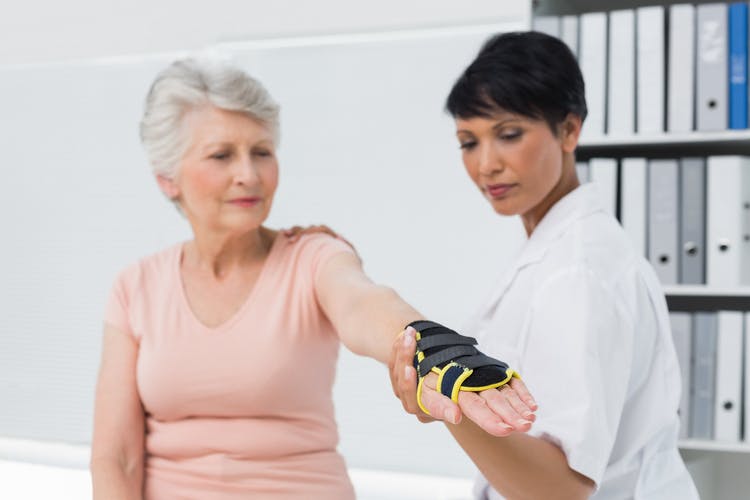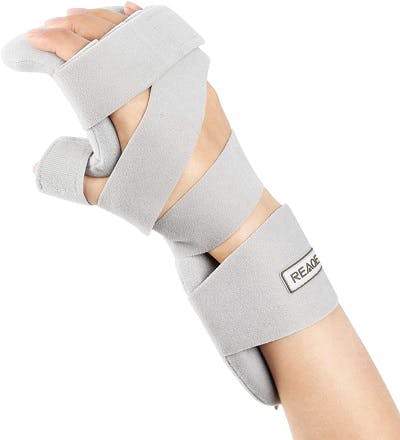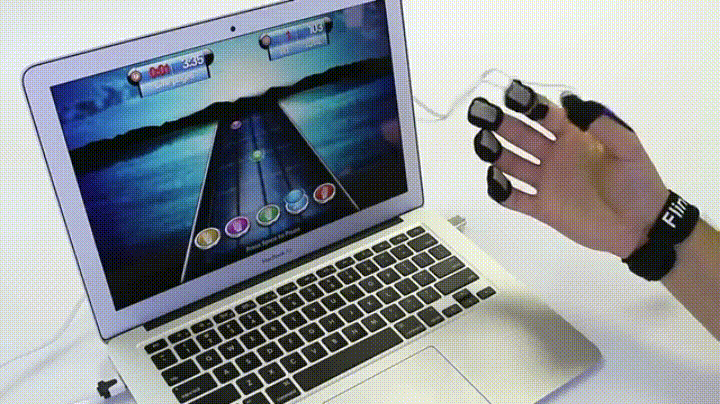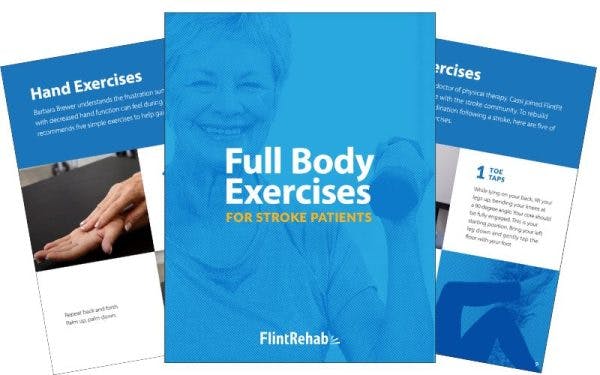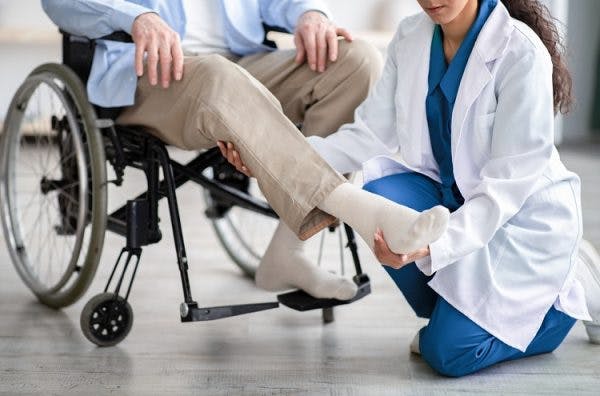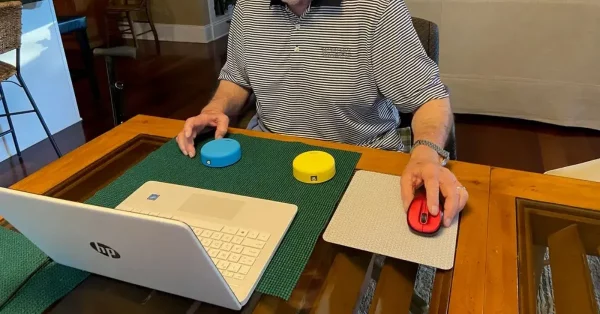If your hand has been affected by a stroke, there are many gloves for stroke patients available to help. But how do you know what to look for, and which one is best for you?
Your occupational therapist is an excellent resource for finding the right stroke recovery glove for your needs. Some gloves help prevent contractures when the hand is very stiff while other gloves focus on improving mobility.
To help you find the best glove for you, this article will discuss 4 different types of rehab gloves for stroke patients. We’ll also explain how hand recovery works so that you can see how gloves can help with your recovery goals.
Why Do Survivors Need Specialized Gloves After Stroke?
To understand which type of stroke recovery glove is best for you, it’s important to understand how a stroke can affect hand movement to begin with.
A stroke occurs when the blood supply in the brain is disrupted, causing damage to areas of the brain that were deprived of oxygen-rich blood. When a stroke affects the areas of the brain responsible for movement, such as a stroke in the motor cortex, it disrupts the brain’s ability to send signals telling your muscles to move.
As a result, many stroke survivors struggle with muscle weakness after stroke. While weakness may be experienced throughout the body, approximately 70% of stroke survivors experience upper limb and/or hand weakness.
Survivors are encouraged to participate in regular therapy to help improve movement after stroke. When therapy is neglected, conditions such as spasticity (tightness in the affected muscles) can progress into severe complications such as contractures (stiff, tight, often painful joints).
In fact, when hand spasticity is left unmanaged, contractures can eventually cause the hand to tighten into a fist and fingers curl into the palm. This not only limits the ability to use the hand, but can potentially be quite painful as well. Gloves for stroke patients can help prevent the development of this complication, among others. But before any stroke recovery gloves are involved, it is important to understand the process behind recovering hand functions after stroke.
When a stroke impacts the brain’s ability to send signals to move the hand, the brain can work around the damaged area by rewiring itself. This process is known as neuroplasticity, and it allows the brain to create and strengthen new neural pathways.
Neuroplasticity is activated through repetition, or massed practice. When you repeat a task on a repetitive and consistent basis, the brain receives this stimulation and responds by strengthening the neural pathways responsible for that task.
Therefore, high repetition of hand therapy exercise is one of the best ways to improve hand function after stroke. This helps stimulate the brain, encourage neuroplasticity, and increase function in the affected hand over time.
Types of Gloves for Stroke Patients
Hand exercise can be difficult when your hand is paralyzed, severely weakened or swollen, or tightened with spasticity after a stroke. This is where gloves for stroke patients can help.
Gloves are practical rehab tools that can help stroke patients recover hand functions and restore mobility. Your therapist is a great resource to find the best glove for your needs, depending on your ability level and recovery goals.
To help you ask your therapist the right questions, here is a rundown of the four main types of gloves for stroke patients:
Static Hand Braces
Static hand braces are ideal for stroke survivors with clenched or immobile hands. Static braces open up the fingers and palm and hold them in a stretched position. This helps prevent contractures in the finger joints by keeping the fingers from curling into a fist.
On their own, however, static hand braces will not help you regain use of your affected hand. They are helpful for preventing hand spasticity from worsening into contractures, but they don’t offer much help for reducing the spasticity itself.
In order to restore hand function and reduce spasticity, you must activate neuroplasticity, which requires repetitive hand therapy exercises. Static hand braces do not encourage movement and therefore can be used as a stepping stone to get to a place where you can participate in hand therapy.
Typically, static hand braces are only worn for certain portions of the day. Talk to your occupational therapist to determine if this type of brace is appropriate for you, and if so, what a good wearing schedule would be.
Edema Gloves
Sometimes the arm and/or hand swells following a stroke, often due to a lack of movement. An edema glove is a tight-fitting glove that goes over the hand to reduce and prevent swelling. Edema gloves may cover only part of the fingers and wrist, or may fully cover the hand, fingers, and halfway up the forearm.
While these gloves also do not directly reduce spasticity or increase hand movement, they can help with redirecting excess fluid build-up to allow the hand to move more freely.
Assistive Gloves
There are a few types of assistive gloves, including dynamic braces and assistive robotic gloves. Dynamic braces place the fingers in a stretched position, but unlike static braces, have some flexibility to allow the fingers to be able to bend when needed.
Conversely, assistive robotic gloves use technology to power movement of the fingers. Both types of assistive gloves promote hand movements, which allows you to use your hand more easily during activities of daily living. This not only helps protect your joints from contractures, but it also encourages small movements which helps provide some stimulation to the brain.
However, simply utilizing assistive gloves does not challenge the brain enough to activate neuroplasticity the way that hand therapy exercises can. Which brings us to the glove most effective for recovering functions, but also the most physically challenging type of glove for stroke patients:
Hand Therapy Exercise Gloves
The final type of glove is actually an exercise device. These gloves contain sensorized fingertips that track your movement while you perform hand therapy exercises. This helps rewire the brain and allows you to restore as much hand function as possible.
For example, Flint Rehab’s MusicGlove is clinically proven to improve hand function in as little as two weeks. It works by tracking your hand movements as you follow along to an engaging, music-based therapy game.
MusicGlove creates an immersive rehab experience where users are encouraged to make hundreds of repetitive motions in one half hour session. This helps spark neuroplasticity in ways that are unparalleled in other types of gloves for stroke patients.
MusicGlove is most suitable for stroke survivors who are able to touch their thumb to at least one of their fingertips. If you have hand paralysis, severe swelling, or a clenched hand, we recommend starting with a static, edema, or assistive glove first and working your way up.
Which Stroke Recovery Gloves Help with Spasticity?
Before we wrap up, it’s important to emphasize that not all stroke recovery gloves help with spasticity. While splints and assistive gloves help stretch open the affected hand, they do not address spasticity directly.
Spasticity occurs when the brain cannot send proper signals to the affected hand. As a result, the muscles in the hand contract in an attempt to protect themselves.
Stretching a hand that is tight due to spasticity is a good way to prevent contractures, but it does not address the mind-muscle disconnect. The only way to address the root cause of spasticity is by rewiring the brain through massed practice of hand therapy exercises.
If you wish to recover as much hand function as possible, you can use different stroke recovery gloves for different goals. For example, you can use an assistive glove to give your hand a nice stretch during specific intervals during the day.
Then, you can also carve out half an hour to sit down and practice your hand therapy exercises to activate neuroplasticity and address the root cause of hand weakness after stroke. Consult your occupational therapist to discuss the best type of glove(s) for your recovery journey.
Choosing the Best Gloves for Stroke Patients
As you shop for stroke recovery gloves, remember that every stroke is different and every survivor will benefit from different recovery tools. A survivor with a clenched hand will likely benefit from a static hand brace while a survivor with moderate spasticity but some residual hand movement can utilize a hand exercise glove like MusicGlove.
We hope this article helped you understand the different types of gloves for stroke patients and what to look for as you shop around and/or ask your therapist for advice.
